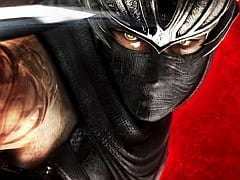Video Gamer is reader-supported. When you buy through links on our site, we may earn an affiliate commission. Prices subject to change. Learn more
Classically, player feedback is a useful but unquantifiable tool. A strong outpouring about a game’s shortcomings might affect its sequel, or if enough people kick off they can get Mass Effect 3’s ending changed, but I’m pretty sure nothing like this has ever happened. After Ninja Gaiden 3’s lukewarm critical and commercial reception in the spring of 2012, Team Ninja has listened to every morsel of anguished bile aimed its way, and rebuilt the game to suit the audience. And, of course, is charging full price for the privilege to play it.
You need only read VideoGamer’s own review of Ninja Gaiden 3 to see where the problems lay. This once famously hardcore series had been neutered in a misguided attempt to make it more accessible, and in doing so lost a lot of the power and magic that the first two games carried inconspicuously beneath their jet-black robes. So, perhaps unsurprisingly, Ninja Gaiden 3 Razor’s Edge is markedly trickier, more complex and less guided as a result. Unfortunately, that’s not quite enough to fix all of its problems.
Where the original (we’re talking Xbox, not 80’s, obviously) Ninja Gaiden was purpose-built to support its own punishing level of dextrous requirements, Ninja Gaiden 3 simply isn’t. On ‘Normal’ difficulty, enemies are more aggressive than before, more damaging with their attacks, and take a rapid combination of dodging, blocking and attacking to dispatch. However, there are just too many of the bastards to ever emulate the flow of the first two games. The endless badguys – good mulch fodder in the overly easy Ninja Gaiden 3 – just obscure the action in Razor’s Edge, meaning much of the combat is done on feel and prescience rather than reaction.
The aim of basic combat is to wait until an enemy attacks with an ‘angry’ assault, which is coded with a red flash or smoke trail, then quickly dodge and hit the heavy attack button to tear them apart with a bone on steel attack. This can then be chained into nearby enemies for a gory treat. It’s a simple but effective mechanic that encourages patience and timing above wanton button mashing, but it’s hard to pull off effectively when you’re battling a wonky camera and a screen that’s covered in enemies.
That said, when it does work – which is often enough – it is a pleasing extension of the classic Ninja Gaiden gameplay that was so sorely missing before. And joining it is a bucketload of gore and limb-rending (strangely removed from Ninja Gaiden 3). As enemies are keener to unleash their angry attack when they’ve had a leg or arm removed, it actually serves a gameplay purpose on top of being hilariously violent. Two minutes into a date with Ryu Hayabusa, and your cleaning bill is going to be astronomical. Not that you’ll be able to pay it, because you’ll be dead. With no limbs. Or head.
Razor’s Edge pads out the campaign with new weapons (again, inexplicably removed from 3), so you can quickly upgrade to Ryu’s claws, and later his Donatello-aping bo staff, all of which shift the combat’s dynamics enough to make them worth switching between. Most importantly and significantly, though, Team Ninja has added new missions where you play as the very purple Ayane of Dead Or Alive fame. She’s a great addition, with exploding shurikens and nasty steel on bone moves, and while her levels feel like they’ve been hastily put together on an old copy of Minecraft, she gets some tasty bosses to battle.
Ah yes, the bosses. A hallmark of the series, and still a visually imposing spectacle every time, but man are they lacking in balance. On normal they’re such a stupid step-up in difficulty that they’re not fun in the slightest. The first sub-boss is so hard it took me at least 40 times to defeat him. There’s nothing wrong with a hard boss that’s fair, in fact there’s a certain beauty to it, but most of these guys are just cheap and boring. Whack the difficulty down to ‘hero’ mode and they’re a more enjoyable challenge, but that leaves the rest of the game far too easy. Not Ninja Gaiden 3 easy, mind, but far too simple for a skilled Hayabusanaut.
As for the Wii U implementation, it’s serviceable at best. The game looks slightly worse than it did on 360 and PS3, but the character models are still sharp and bold, and there’s a certain novelty to seeing HD games on a Nintendo console still. The gamepad is used as a touch screen for upgrades and the like, but can be switched for handheld play. If you’re going to do that, though, make sure you whack up the gamma, as it’s stupidly dark on the little screen.
So, there’s little doubt that Ninja Gaiden 3 Razor’s Edge is a superior game to Ninja Gaiden 3, but in a console market that’s about to be assaulted by Dante, Raiden and even Kratos, it’s seriously lacking in precision and balance. And considering the subject matter, you’d think that would be paramount.
Version Tested: Wii U
Game supplied by Nintendo and played for approximately eight hours.
